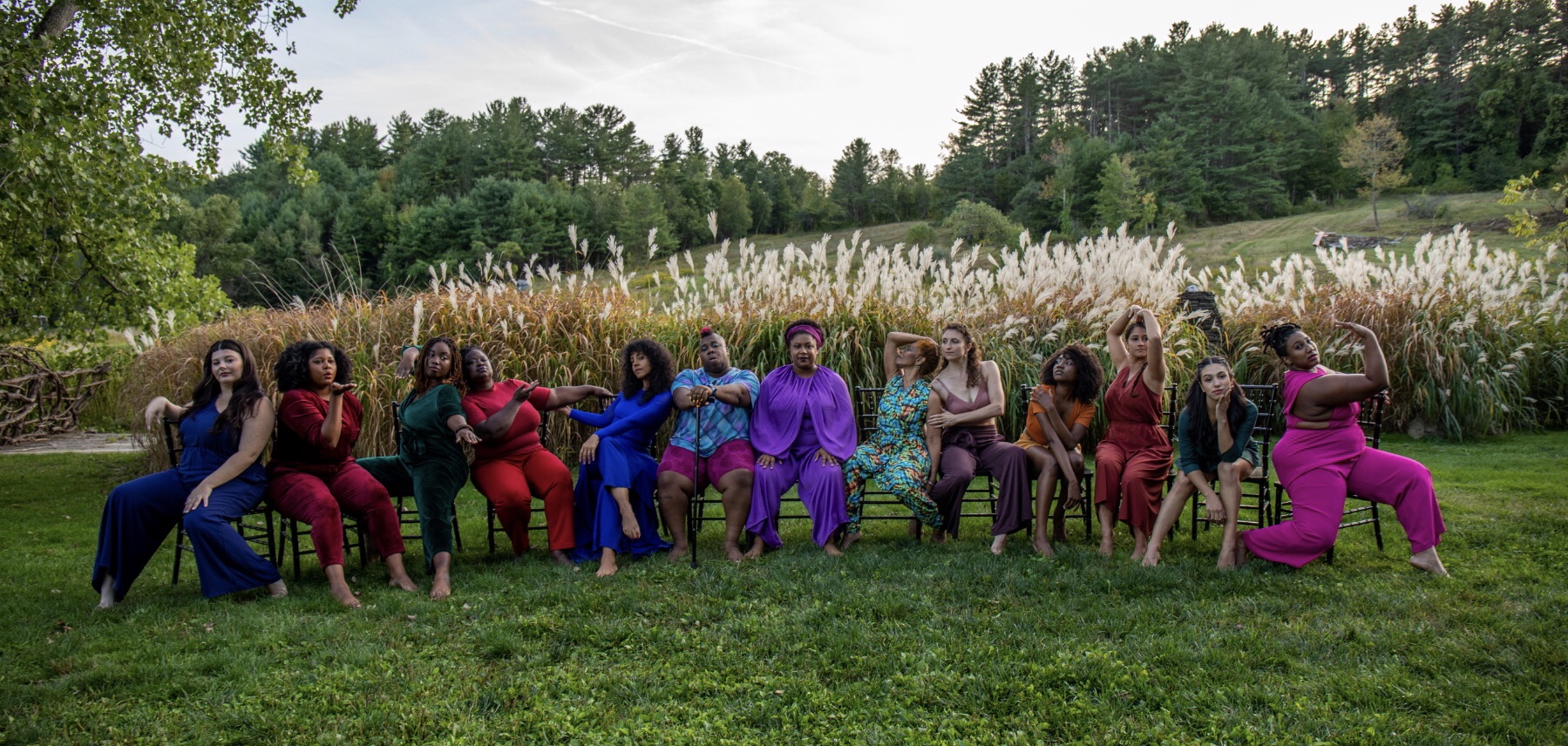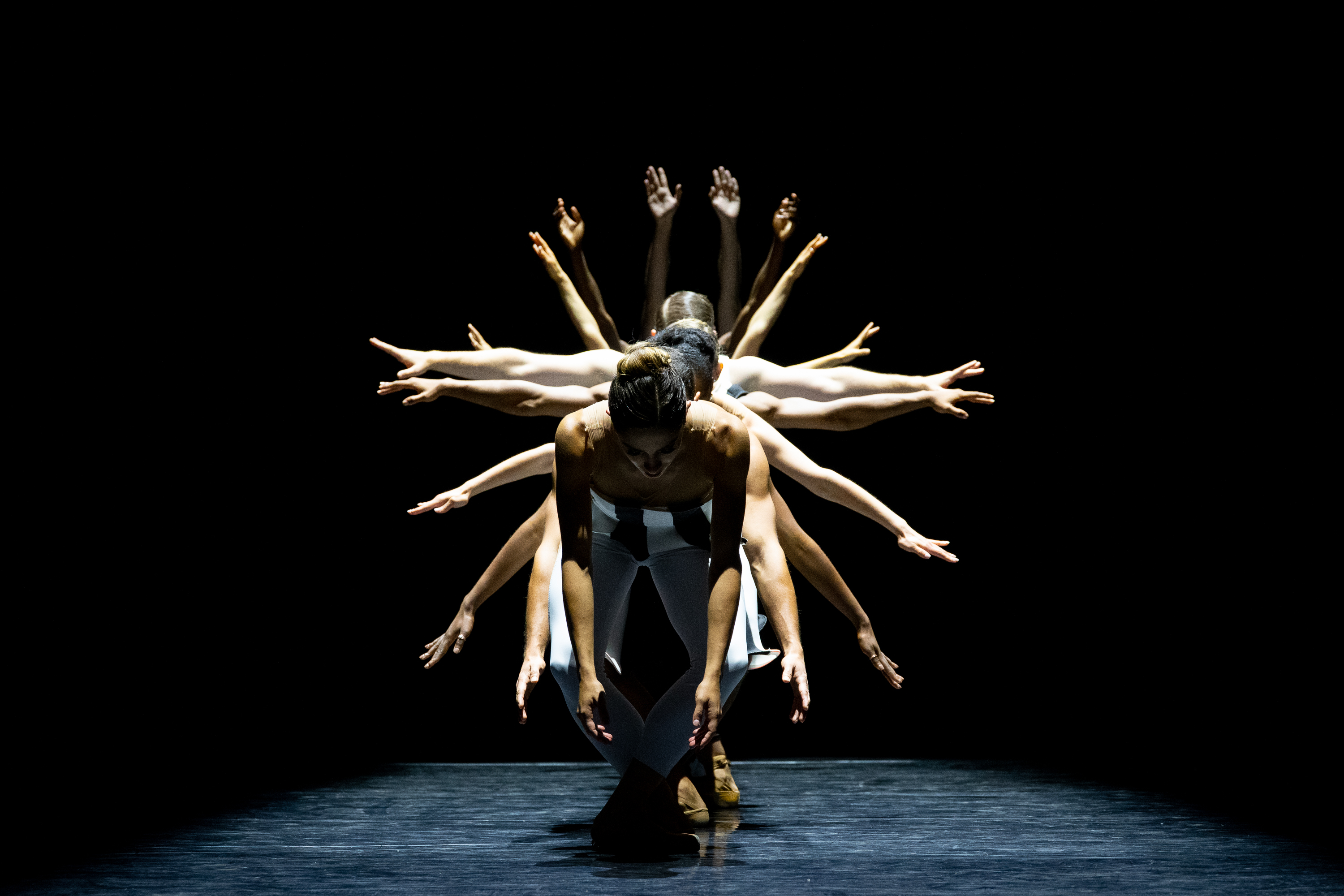ARE WE BLEEDING YET?
TERE O’CONNOR AT AMERICAN DANCE INSTITUTE, ROCKVILLE, MARYLAND
By Luella Christopher*
May 16, 2014
In “BLEED”, presented locally to an audience in the Washington metro area for the first time, Tere O’Connor achieves a measure of dramatic action without necessarily intending to do so. Program notes divulge that O’Connor works with a “willfully convoluted palette” that gives equal emphasis to “recognizable imagery and the anomalous”. The “sequencing of events [then] accrues meaning in choreography”.
While most of the work is performed as a large ensemble or pairs, trios, quartets and quintets within the full ensemble, O’Connor deftly employs soloists as protagonists – most notably Ryan Kelly, formerly of the New York City Ballet; Oisin Monaghan, originally trained in Graham technique; Heather Olson, graduate of North Carolina School of the Arts; Washington, D.C. native Silas Riener, a former Cunningham dancer; and Philadelphia-bred artist Devynn Emory. One after the other, they lead the charge, incite discontent within the group and evoke lamentations over its existence.
Olson opens the piece, alone on stage and swaying in circles to a percussive beat that undulates, then disappears. At other times she is shielded, revived when she falls, or carried aloft. Monaghan, in contrast, casts snarling glances offstage, launches into falsetto cum wail, and generally claws his way to the final moment of the work when he succumbs to exhaustion or perhaps death.
Unison shrieking, shaking and even chest-beating occur intermittently throughout the piece, almost as if O’Connor is commenting on the horror of events that remain unexplained but clearly affect the dancers as an entity. It’s a highly effective theatrical device that rivets the attention of the audience and tells the “story” of something gone awry. Minimal words exchanged midway through the work between various dancers show that their interaction is more confrontational than empathetic. Often, especially in some early segments, there is no eye contact at all, though they are moving as a group or smaller groups within the full ensemble.
Along the way, O’Connor adopts humor and visual metaphor, as when a pair or trio of dancers chases one another around all the other dancers, who remain static on the floor – markers around which the movers play a game of hide and seek which they observe with interest. O’Connor often uses larger ensembles as onlookers who are positioned in stasis upstage or off to the sides as the “dance within the dance” or bleeding of groups away from and into each other transpires. Again, a highly effective choreographic and staging device.
Lighting shifts and blackouts mark some of these moments as transitions or “breaths” between the drama that ever resumes. Walking, stomping, windmill arms, running and forward jetes – sometimes by everyone in the corps – also serve to delineate the segments of O’Connor’s frequently high-strung, frenzied movement. Well into the piece, a stunning spiral-shaped tableau vivant of all the dancers from upstage to downstage provides a sculpted Cubist moment worthy of overhead still photography.
The music could stand on its own: a masterfully conceived progression of “found objects” interspersed with male or female voices that O’Connor explained to this writer as individually recorded, then juxtaposed one over the other, to give the effect of small vocal ensembles. James Baker, principal percussionist with the New York City Ballet Orchestra, composed the innovative and compelling score. O’Connor wisely alternates the percussive segments and voice-overs with moments of silence and the eloquent strains of solo cellist Chris Gross as if to further underscore the didacticism and solemnity of the action on stage.
O’Connor’s choreography is grounded in ballet. The grafting onto ballet technique of movements more familiar to post-modern dance does not create a jarring departure from his base. This is partly due to the exceptional athletic but highly balletic skills of the male component of the corps in particular, an element that can be muted in some contemporary companies. Whatever its source, the marriage between individual skills of the dancers and the quiescent narrative that’s not a narrative stands solid. This ensemble moves together like a family, if a desynchronous one.
Copyright © 2014 by Luella Christopher, author of Pirouettes with Bayonets: Classical Ballet Metamorphosed as Dance-Drama and Its Usage in the People’s Republic of China as a Tool of Political Socialization, Ph.D. dissertation at The School of International Service, American University, Washington, D.C., 1979 (archived at University of Michigan)
Review commissioned and published by IsItModern?




